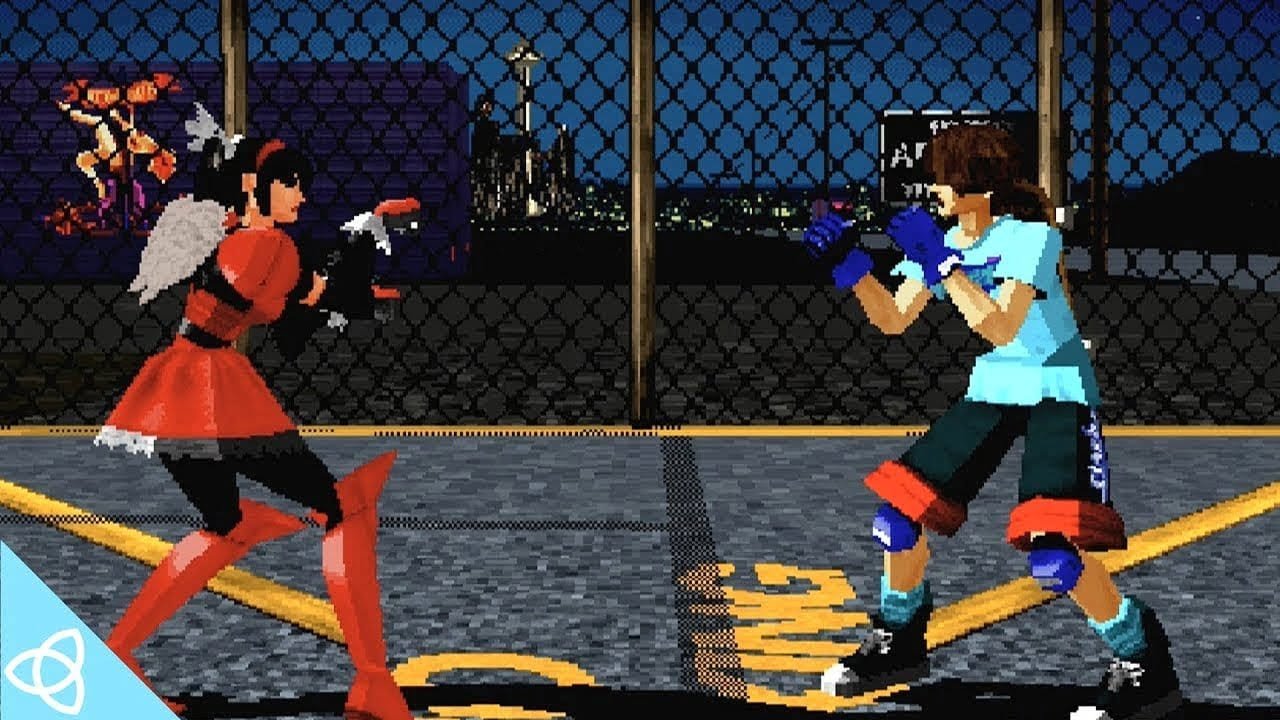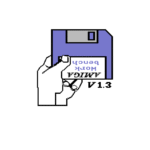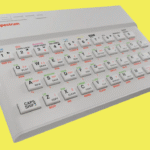Christmas, that all too brief season of light and cheer. The very Emmanuel; snakes be gone, unless you were me playing Fighting Vipers that 1996 Christmas season, which I very was and which should also serve as a convenient crowbar to allow me to pour praise of light and cheer on that most neon glazed of mullet-emblazoned fighters. Let us raise a glass and remember.
It was the winter of 1995 and long since the banners had been raised around the spontaneously lucrative 3-D fighting scene. There was Sega AM2’s Virtua Fighter and then there was Namco’s Tekken. It was a fantastical binary choice and the camps were formed. Japan held Virtua Fighter up as not just a fighting game but a titan of light entertainment itself, while the rest of the world shrugged and declared Tekken moodier and cool. Both could be respected but only one could be best and one did have to be best. Voices were raised and fists shaken but then from out of the dividing line came new creations from both developers.
Namco had been to the forge and came back with Soul Edge, a historical fantasy fighter that would go on with sequels that decapitated all popular challengers and AM2 gave us a westernish urban scrap fest that literally fell over with popularity outside Japan. There was a sequel and I will get to that, but let’s do the good stuff first. Soul Edge and Fighting Vipers both jumped excitedly out of their pictures in magazines. Soul Edge wouldn’t do so well when you actually saw it running on account of the low frame rate and 60 fps being a standard even then, but Fighting Vipers was some free-form breed; ostensibly set in the make-believe American city of Armstone, but filtered through high gloss fluorescent lipstick of colours. Basically, it looked hardcore Japanese and came with the spectacular flourishes of effects that Sega’s Model 2 arcade did with a smile as it took your cash.

Better yet, AM2 were going to make a conversion for the Saturn. They would have to as Big in Japan meant just that. I was always happy to be holding onto the furthest thread of that cultural coat-tail, living as I did on the welsh border and seeing what I could through the media of the time. I zeroed in on Fighting Vipers without having played the arcade game and only having just bought the machine that would play it. I knew it was a hefty effort of conversion but like everyone else I had played their conversion of Virtua Fighter 2 and that was outstanding. This could only be better. It was going to do lighting effects and everything.
Truth be told I never had the ability to get beyond the remedial with Virtua Fighter 2. It was wound tight and technical while Vipers promised to be a little crunchier and more instantly gratifying; even more than Tekken 2 which came out in Britain at around Viper time and seemed to end the western debate between Virtua Fighter and Tekken supremacy. Tekken had won like the machine it played on, but not in my Saturn it hadn’t. Fighting Vipers wiped them both from the sole of its high-heeled boot.
Quite how AM2 managed to fit such a game onto a lowbrow home machine was thinking way above my station but you couldn’t help but notice the effort. Those lighting effects did look as gaudy as I had hoped and the thrice instantaneous replays were packed with pop-punk allure. Virtua Fighter was earnest and Tekken was cool but Fighting Vipers had style. A post-eighties nightmare of a style perhaps but no less so because of it; each of the eight main fighters lovingly created to be something between a doll and Frankenstein’s monster.
Raxel looked like he trying to be Axl Rose from Guns n Roses but came across more Vim Fuego of Bad News.
Candy was an absolute doll, but Sanman, he was a Frankenstein by way of a Crayola mind. He seemed to have some kind of chrome armour on him because they were all supposed to have some sort of armour on them even if you didn’t really ever notice that until you had smashed some of it off and made one of those instant replays happen. Bang, bang, bang they went and then either you or the other were playing in just your unders, and they didn’t give much protection at all so you had to get good with the counter moves. Counter moves had been a top-tier thing in fighting games for a little while by this point but Fighting Vipers made them not just accessible, but part of the regular beat of playing. Press back and kick. Time it half right and your character (roller-bopper Grace for instance) would charge up a moment, block the attack and deliver a roller boot counter with a high chance of replay to confirm that something very good had just happened.
It was a very effective mechanic and played straight into the sense of impact that this game jabbed you with each round; the slam of a face going into the cage wall and accompanying sound, the fluorescent flickering colours of a low-lit stage, smashing your opponent out of that stage to finish a round. Taken in its fullness it is something of a mystery why this game didn’t draw a bigger crowd outside Japan. Because it was exclusive to the Saturn of course but that wasn’t the developers’ fault. And to be fair some of the few characters you do get are way out at the funky end of the Frankenstein chart.
Raxel looked like he trying to be Axl Rose from Guns n Roses but came across more Vim Fuego of Bad News. Picky had a skateboard. Enough said. Tokio was otherwise a pretty regular-looking guy but for the Crayola mind colouring thing. Vasquez from Aliens does show up though. I think she called herself Jane this time. Or maybe it was Jayne. It was the nineties. There was also the Boss, B.M., and he looked like every fevered dream anyone ever had in a Las Vegas hotel. Then finally you had Bahn, and if the game had a central character it would have been him. Long coat, tall collar and fistfuls of free-form attitude, Bahn was the wandering spirit of the game. Part young Clint Eastward and part Vampire Hunter D. He carried the mood of this fighter like Akira and Kazuya had done for Virtua Fighter and Tekken before him, and for my money he’d dragon punch them both before breakfast. Yes, Fighting Vipers had style alright. You just had to forgive it its tendencies.

For an immediate comparison, I would say it is like my occasional relationship with Hawkwind. I love it even though it is what it is.
Sega must have loved it too because a couple of years or so later AM2 gave us the incredibly titled sequel, Fighting Vipers 2. No sub-title? Come on now Sega, if any arcade game deserved some bells and whistles to its moniker, this was the one. Snakebite? Venom? The Scales of Fate? They didn’t go with any of them for this Model 3-powered super sequel.
But then in truth, there was so much that they didn’t do but apply some PVA to the gloss. The characters looked jazzier but lost so much of their mood and in so doing lost their character. And fighters are character games. By the time Vipers 2 showed up on Sega’s Dreamcast the venom was gone and the Vipers crawled on their forgotten bellies out to the desert of Armstone where their ghosts will forever haunt Virtua Fighter and Tekken from neon-lit shadows.
Affiliate Disclosure: Some of the links in this post may be affiliate links, which means I may earn a small commission if you make a purchase through those links. This comes at no extra cost to you. Thank you for your support!
John is a former contributor with a collection of interesting retro gaming recollections.







